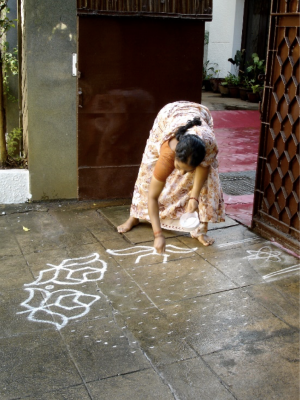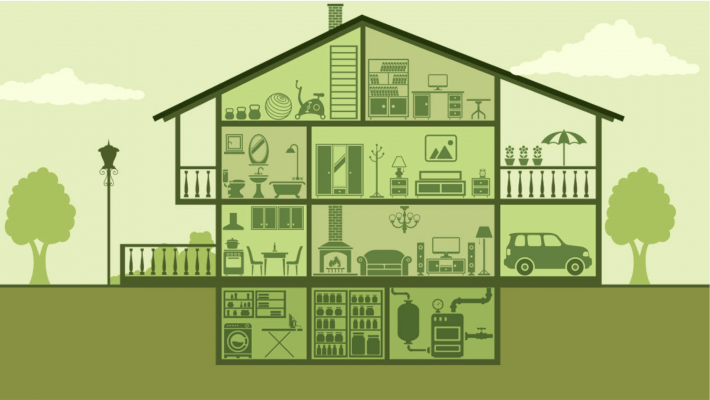Our bodies need physical and emotional nourishment, not once in a while but regularly. If you don’t nurture, clean and nourish your mind and body, you tend to notice changes and loss of individuality, relationships and growth. Similarly, everything that breathes and is living, possess a soul. A living soul, that resides in the physical bodies. But what if we were to believe that apart from the living, the spaces we dwell in, have their very own soul too? What is architecture, is a practice of not only building a shelter, but also a place for a soul? Or what if on building a space, the energies in the vacuum are the soul itself? And what if we nurtured our spaces and surroundings in the same way we do with ourselves?
Energies, their effect and impact have all been explained by the world’s ancestors in various ways. They have practiced thenurturing, generation, manipulation and maintenance of energies since they knew of time and existence. The Stone circles and labyrinths of Europe, pyramids of Egypt, temples of India, were all structures built in response to the cosmos, energies and time. But with flourishing new styles of modernist architecture, these traditional building techniques were lost in time, to fancy forms, experimental deconstructivism structures and urban populace. The sense and meaning of building, was somewhere lost in the making of shelters and art.
And when else than the 21st century, progressing at the pace of light, would be the best time to realize, understand and reconsidering our ways of building and living?
Respecting, harnessing and building the inherent, radiating and exchanging energies is what we call Energetic architecture. In order to understand and use the concepts of energetic architecture in the contemporary world like they used to in the ancienttimes, how do we address and relate the human needs and comforts? And why do we even need to address the need of energetic architecture today?
 There are energies constantly radiating and running through the human body in various forms-‐ biochemical, electromagnetic, energies inside us, energies on the outside, energies from the cosmos, energies from the earth, from fellow humans, animals, plants, and everything that breathes, and lives. And we as human bodies as absorptive beings are absorbing it all, in everything we do, even in our existence.
There are energies constantly radiating and running through the human body in various forms-‐ biochemical, electromagnetic, energies inside us, energies on the outside, energies from the cosmos, energies from the earth, from fellow humans, animals, plants, and everything that breathes, and lives. And we as human bodies as absorptive beings are absorbing it all, in everything we do, even in our existence.
Our buildings, our enclosed spaces where we spend 90% of our days in, become our third layer of
skin. And the house that we live in, just like our bodies, needs to be a space that harnesses energies beneficial to us, and help us avoid absorbing those energies harmful or degrading to us. But how do we determine these energies? How does one differentiate between the beneficial or harmful energies being emitted, and how will the architects understand that?
The process could be incorporated with design guidelines that provide techniques to channelize, boost, absorb or diffuse these energies. But first we’d have to determine the energies, the effects on human bodies, enclosed spaces and built environment. In today’s time, we need to begin, from scratch, in identifying these.
Energy of the building materials, morphogenic energies, historical energies, the intangible and the tangible are a few forms of energies that have been researched and studies upon in the past few years. For example, if we were to talk about thehistorical energies existing in a space-‐ we could consider a house. A house pre-‐owned by a couple-‐ grieving andfighting, the husband violent to the wife, the cries of the wife and everything else, still stays back as they leave. The energies are absorbed, they don’t vanish or leave, and when a new one tries to live a happy peaceful life in the same house, his possibilities are affected by these negative energies, his growth is limited. The vibrations of grief and despair do not allow thepositive to harness.
This exactly is what needs to be traced out about built spaces, the ‘embodied energies.’ The other forms of embodied energies are the one’s harnessed during construction, the materials inherent in the materials used. Imagine, a mason laying bricks, grieving the loss of his unborn child, or a painter in despair due to his poor state of life. These workers, when working with the bricks, concrete, clay, wood, transfer these vibrations of grief and despair to the materials and in the process, to the walls, windows, rooms, the house. These emotional energies and a few more generated in the process by the humans and the surroundings are now embedded in the buildings and spaces.
 There have been examples of roads being built upon a row of trees cut, and the increase in frequency of accidents on this road have been noticed. But is it always only the humans, the living and breathing that affect the energy grids? If we were to study the morphogenic fields as explained by Rupert Sheldrake, we would know that the vibrations, radiations and energytypes-\\ shapes, forms, are in constant exchange, growing, nurturing each other, through times.
There have been examples of roads being built upon a row of trees cut, and the increase in frequency of accidents on this road have been noticed. But is it always only the humans, the living and breathing that affect the energy grids? If we were to study the morphogenic fields as explained by Rupert Sheldrake, we would know that the vibrations, radiations and energytypes-\\ shapes, forms, are in constant exchange, growing, nurturing each other, through times.
Architecturally, there are several layers to these energies in spaces, the location of the building becomes the first and the foremost one. If there was a graveyard near the house, or a hospital around the house? Will they affect you? Will the affect our space? If there was a primary school, or a park plaza around your house, will they affect in a different way?
 Through time, since the archaic times, the common man has understood these affects and has found processes, formed belief systems to modify, rectify and control these energies in our spaces. The process has been unknown, but the effects have been witnessed and experienced. In Hindu traditions, there are poojas that are performed regularly in the house, diya lamps lit twicein a day, Kollam Rangolis-‐ hand drawn designs at the main entrance doors of the house, of removing chappals outside the house, of ringing the temple bell at entrance, etc. have been forms of recharge processes for the house and minds. They were a form of cleansing, a welcoming freshness with fragrances and colors inviting positive energies into the house.
Through time, since the archaic times, the common man has understood these affects and has found processes, formed belief systems to modify, rectify and control these energies in our spaces. The process has been unknown, but the effects have been witnessed and experienced. In Hindu traditions, there are poojas that are performed regularly in the house, diya lamps lit twicein a day, Kollam Rangolis-‐ hand drawn designs at the main entrance doors of the house, of removing chappals outside the house, of ringing the temple bell at entrance, etc. have been forms of recharge processes for the house and minds. They were a form of cleansing, a welcoming freshness with fragrances and colors inviting positive energies into the house.
In India there are various festivals like Diwali, Holi, which are celebrated throughout the year, which drive happiness, togetherness, harmony and joy-‐ these in turn produce cleansing and positivity. Other activities, like cooking, a mother caressing the child, etc. are the forms of everyday energies that recharge and charge the house spaces. Like the human body, does this architectural space need Chakra alignment too?
These energy effects have been studied in the same ways in architectural concepts and forms. There is a difference when the door is open, when the door is shut, when the windowsill is high, or when low, when walls are at an angle, when walls are curved, etc. What happens in the space between the columns? What do the beams carry from one room to the other? When we finish floors in tiling or mud, are we only providing ourselves with a smooth surface to walk on, or creating a medium of resonance or control for the telluric energies? When we cover the roof, are we only sheltering our spaces from rain or heat, or are we filtering the strong cosmic energies in some ways.
An architect, has created a house, a home, with doors and windows in certain ways and directions, only considering the climatic conditions of the place, the concepts and requirements of the client, but in that understanding he has cut the home off the energies that are generating and moving around the house, during the day and during the night, in the morning and evening, in people arriving and leaving.
These energetic implications of spaces, the intangible and the hidden have always been there, through generations and all times, not the forms, not the shapes and not the sizes. Buddhism talks about it, Vedas and Egyptians talk about it, thepre-‐historic populace spoke about it.
How did they come to realize and understand these energies? Why did they feel the need to address these, back then?
In an organized system as that of the contemporary world today, if we were to skip the important concepts of energetic in architecture, we’d fail to call our approach an ‘holistic’ one. Even in nothingness, in the vacuum there is energy science says. This dormant energy is here, now and has been here.
There is a need for architects, designers, artists and laymen and come together and form systems of address to this energetics. There is a need for the creation of spaces that are spaces of release, of comfort, of change, growth, happiness and peace. There is a need to create connections between humans and spaces that they live in, between spaces and spaces, and deliberate energy grids that contain them and therefore are contained within. There is a need of synchronicity, where there are harmonized vibrations in play. A regular recharge of spaces and energies, with the ongoing constant exchange of energies is hence necessary. It is essential to maintain the balance and harmony of a space, and not tether with burdens of past, present or future. Holographic information, silences, darkness, light, wind and more, these too become the carriers and hence can be controlled, maintained and fostered. Different energies and frequencies affect different people in different ways-:‐ awoman, a man, a dog, a child, a grandparent, an owner, a guest, etc. would have different experiences. There is also a requirement to create spaces that are in harmony with nature and which harness these natural energies.
Blended with the power of consciousness and matter, these references and questions further call for a consideration, an explanation, and therein lies a quest to rediscover these factors, concepts and energies in existence.
Architect Mayank Barjatya is executive director of Prithwe Institute, in Pune, India, our institute’s treasured international partner. Click here for more information.

